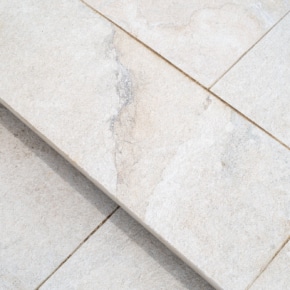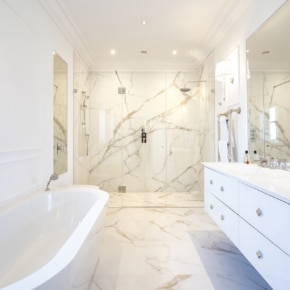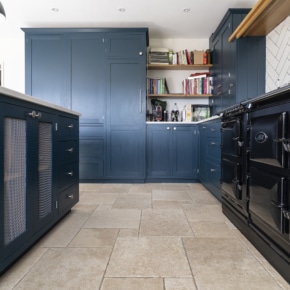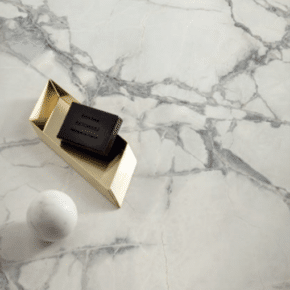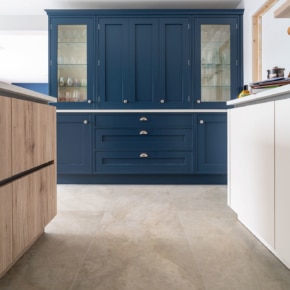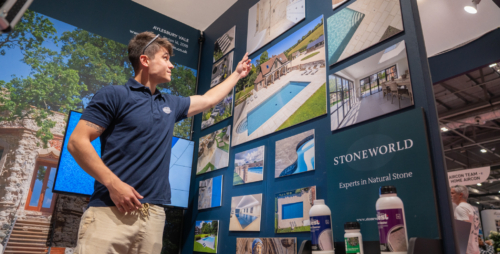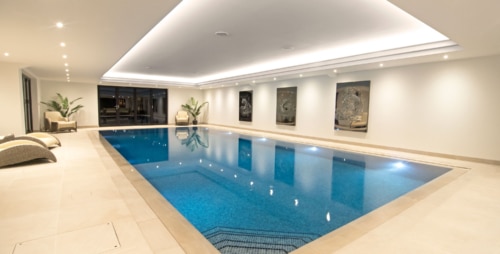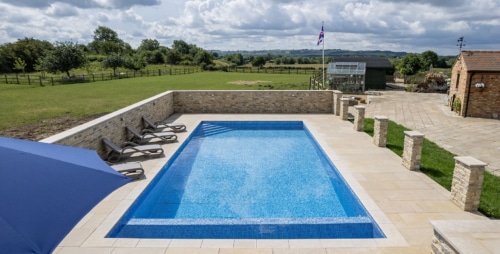Although some people interchange the terms ‘porcelain’ and ‘ceramic’ when describing tiles, they are actually two different things and due to their makeup, and in certain circumstances, particularly in the UK, one might be more appropriate for a project than another.
Find out here how they differ to make sure you choose the right product for your project.
Porcelain Tiles
- Made with highly refined white clay, sand and feldspar
- Fired at a higher temperature under greater pressure
- Harder and more dense
- Absorbs less water
- More hard-wearing
- Great designs available, accurately mimicking many natural materials e.g wood, marble, stone.
- More brittle to handle when laying, and therefore best laid by a professional
- Can be used on floors, patios (and walls, depending on weight)
- Great for many situations, but especially useful where high traffic occurs. Also fabulous around the home and garden. E.g. Commercial properties – hotels, offices, retail outlets. Also great in areas with very high moisture levels such as wet rooms, patios & pool areas.
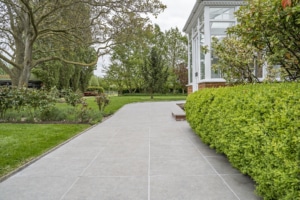
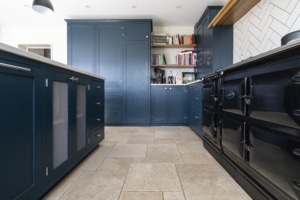
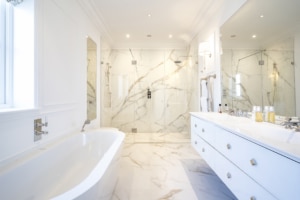
Ceramic Tiles
- Made with red, brown or white clay.
- Softer and less dense
- Can be prone to cracking in cold weather
- Best used on walls or in low traffic areas
- Available in many colourful styles
- More manageable when laying, therefore great for DIY-ers.
- Cheaper price than porcelain
How are ceramic tiles made?
Ceramic tiles are made using natural red, brown or white clay. The clay is fired at a high temperature to reduce the water content. Afterwards a glaze is added. Finally the pattern is applied.
How are porcelain tiles made?
Porcelain story tiles are made with a specific, refined white clay, to which finely-ground sand and feldspar are added. The tiles are then fired at a higher temperature and pressure than ceramic tiles, making porcelain tiles much more hardwearing.
The main difference between porcelain and clay tiles is the rate at which they will absorb water. The denser clay used to make porcelain tiles makes them less porous, (porcelain tiles absorb less than 0.5% of water) whilst ceramic and other non-porcelain tiles absorb more.
Density & Durability
Porcelain tiles are denser than ceramic, and less porous. This makes them harder and more durable. They are very suited to high footfall areas which will see heavy use, and wet areas. However, ceramic tiles can still have their place. Being less brittle they are a great product for DIY-ers, as they are more forgiving to work with. Ceramic tiles are also usually cheaper to buy than porcelain tiles, but they are not as durable.
PEI Ratings
PEI ratings will advise you if your chosen tile is suitable for your planned project. Tiles are graded from 0-5 depending on the hardness of the tile:
- PEI 0 – No foot traffic (wall tiles)
- PEI 1 – Very light traffic (e.g. bathroom)
- PEI 2 – Light traffic (e.g. bathroom and bedroom)
- PEI 3 – Light to moderate traffic (suitable for most domestic floors)
- PEI 4 – Moderate to heavy traffic (suitable for domestic floors and some commercial uses)
- PEI 5 – Heavy traffic (suitable for all domestic and commercial uses with heavy footfall)
Most ceramic floor tiles are graded between 3 and 4. Porcelain tiles tend to have a rating between 3 and 5.
High foot traffic
The durability of porcelain tiles make them perfect for high traffic areas as they are resistant to scratches and scuffs. Whether in an area of the home that sees high footfall, such as the hallway or kitchen, or in a commercial space, porcelain is the most hardwearing.
Wet areas
As porcelain is nearly waterproof, these tiles are the best material to use when installing a wet room due to the levels of moisture. They can also be made slip-resistant, making them a good choice around a pool area.
Outdoors
As porcelain tiles are virtually non-porous they are suitable for using outdoors and will withstand UK winter weather conditions. Ceramic tiles are not frost proof and may crack.
Design
The latest designs available in porcelain are a far cry from what was previously available. It is now possible to buy tiles that are very realistic copies of natural materials such as wood, marble and stone. These new porcelain styles offer the customer a lightweight, low maintenance alternative to the real thing, at a very competitive price.
View our porcelain paving range
View our interior porcelain tiles
If you have any questions, please call us on 01844 279274 or email us at sales@stoneworld.co.uk and our team will be happy to help.





